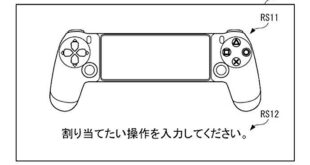Generation Media digital media executive Sam Clutterbuck discusses how ad strategies have evolved alongside the boom in mobile gaming.
The growth of mobile gaming in the past few years is hardly uncharted territory, but even to the most mobile savvy among us, the numbers are staggering.
In 2013, eight per cent of the population had downloaded a gaming app on their mobile or tablet, whereas this year this figure has increased to 18 per cent – a 120 per cent increase.
With the gaming landscape evolving, it is our responsibility as a company to understand the rapid mobile adoption and use insight to predict future trends. In turn, our ad placements for the brands we represent should engage the user with content that will be of interest, elevate the gaming experience and not disrupt users whilst impacting their purchasing decisions. This, in principle, is a fine balancing act which requires data, insight and strategic planning.
When assessing mobile games, it is important to see it as a separate category to core gaming. With 40 per cent of releases being played on a mobile device, and with user acceptance that free mobile titles will have adverts (eight in 10 prefer a free mobile game with ads rather than paying for an ad free version) opportunities to engage users with brands are ample. It all depends on what the objective of the campaign is; whether it be to build awareness or create engagement.
In 2014, the Internet Advertising Bureau highlighted that standard display ads come out on top when trying to create brand awareness. What tends to require a more significant investment, but can provide realism within the game itself, is in-game branded content or advertising. This can lead to positive association of the advertiser.
Whether it be in-game billboards or product placements, this method can be mutually beneficial to publishers and advertisers alike. It can help to make gameplay more realistic, provide real-world context and even help with the game navigation. Relevancy is key to making this strategy a success.
This works perfectly with sports franchises such as FIFA. With the latest edition being released this week, brands such as Nike, Adidas and Puma can benefit from their association with the sport by advertising in FIFA’s mobile rendition.
What we are seeing more and more of is investment into rewarded content from brands, allowing users to gain points, unlock new features or accumulate virtual currency in exchange for user’s interaction with video ads. These tend to be opt-in but are seeing unprecedented awareness, ad recall and message association. The combination of the immersive focused nature of gaming, the positive connotation with the brand due to the reward means that we are looking at an ad format that engages the user, elevates the gameplay, is not disruptive and influences purchase decision.
A recent study by Tapjoy and ComScore reviewed the best practise for mobile gaming ad strategy by analysing 14 brand campaigns over a two year period. The study showed that by integrating rewarded ad experiences into mobile games, brands saw uplift in ‘brand favourability’, ‘likelihood to recommend’ and ‘purchase/consideration intent’ rise two or threefold.
With mobile being the fastest growing element of digital online ad spend it is imperative to invest in both proven and innovative strategy in the mobile gaming space. While in-game can create positive brand association and engagement, it is also important to include formats such as display due to cost efficiencies and reach factors. What is definitive is that relevancy of the brand is key to ensuring that the ads elevate the gameplay in conjunction with gamers building positive relationships with these brands.

 MCV/DEVELOP News, events, research and jobs from the games industry
MCV/DEVELOP News, events, research and jobs from the games industry



